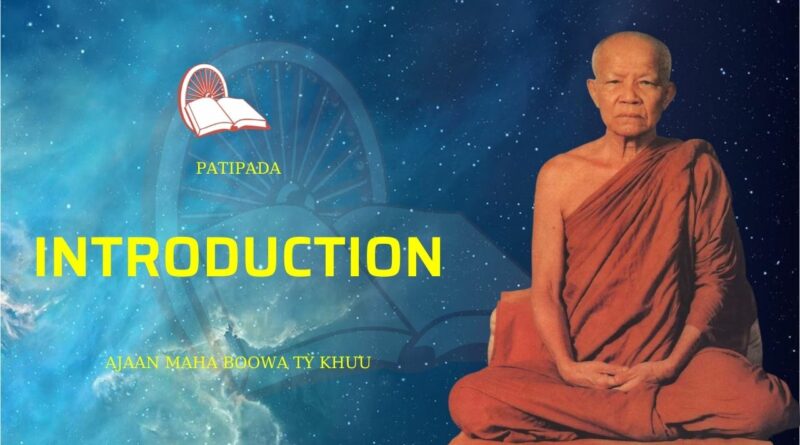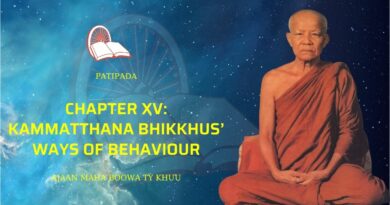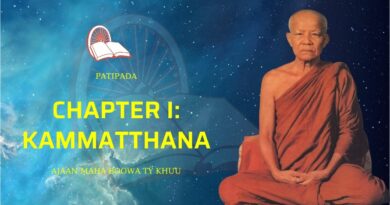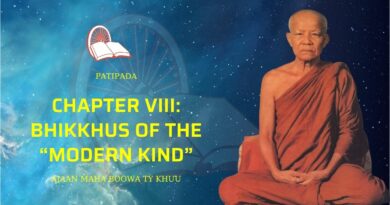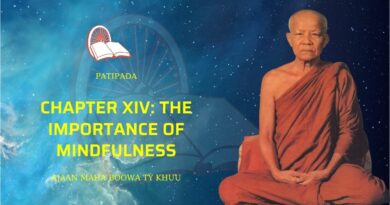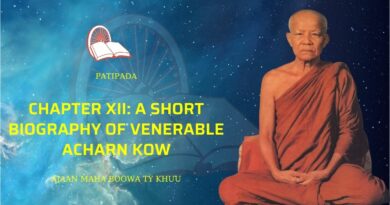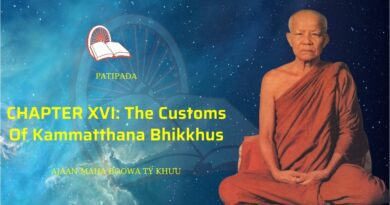PATIPADA – INTRODUCTION
This book is a translation of the Dhutanga practices of Venerable Acharn Mun Bhuridatta, and it was written by Venerable Acharn Maha Boowa Ñanasampanno Thera, as a companion volume to the “Biography of Venerable Acharn Mun”. The author of this book, Venerable Acharn Maha Boowa, who is now (1995) already 82 years old, has been ordained for 62 years. He founded Wat Pa Baan Taad 40 years ago and has lived there ever since as the Abbot. He first went to stay with his teacher, Venerable Acharn Mun, in 1941 and learnt the ways of practice and meditation from him for 8 years. Much of what he learnt has been written about in this book so that the reader can get a fair idea of what hardships and difficulties he had to undergo.
There are already two translations of this book. Only the first of them has been printed, in serial form, in the “World Fellowship of Buddhists journal”, but this translation is very incomplete and rather inaccurate. Whereas the second translation which was done by Venerable Suchard (Abhijato Bhikkhu) was complete and quite accurate. At first I thought of using this translation, correcting it and improving the English (which was already quite good). But then, I had to consider the style of English, the correct meaning of many of the technical terms and the way to bring out some of the underlying subtleties of the text. In the end I decided that it was easier to start over again and do it all in my own words. But in all of this, I must acknowledge the debt I owe to the translation that was done by Venerable Suchard.
This book includes many things that may not be easy to understand for the reader who is not familiar with the theory and practice of Theravada Buddhism. For this reason the reader may find that for the first reading it is better to skip over many of the deeper explanations of the Dhamma teaching, and to go on to the methods and practices of the Acariyas which are related herein. However, it should be realised that one cannot get a full and proper understanding of the ways in which these Acariyas practised without also reading about the underlying reasons for what they did.
In the text, many words in the Pali language are used. But in all cases a translation is given close by in the text, in footnotes, and in a few cases in which commonly used words occur, such as “Dhamma”, “Samadhi”, etc.:, no translation is given. The principle which I have used in using Pali terms is that, it is better for the reader to not understand rather than misunderstand a forced translation. But in any case, there is a fairly good and complete glossary at the back of the book, while some special words have also been covered more completely in an appendix. In the text I use both words Acharn and Acariya, both have the same meaning, “Teacher”, but in Thai the word Acharn is also used as a respectful title for a senior monk. Normally when referring to a senior monk by name or in place of his name I have used the word “Acharn”, but if I want to refer to him as a teacher I have used the correct Pali word “Acariya”.
Finally I must express my thanks and gratitude to the person (who wishes to remain anonymous), who has typed out the whole book and carried out two series of corrections and several other things besides, while at the same time supporting a house and family.
Bhikkhu Paññavaddho
Wat Pa Baan Taad
(1995)

